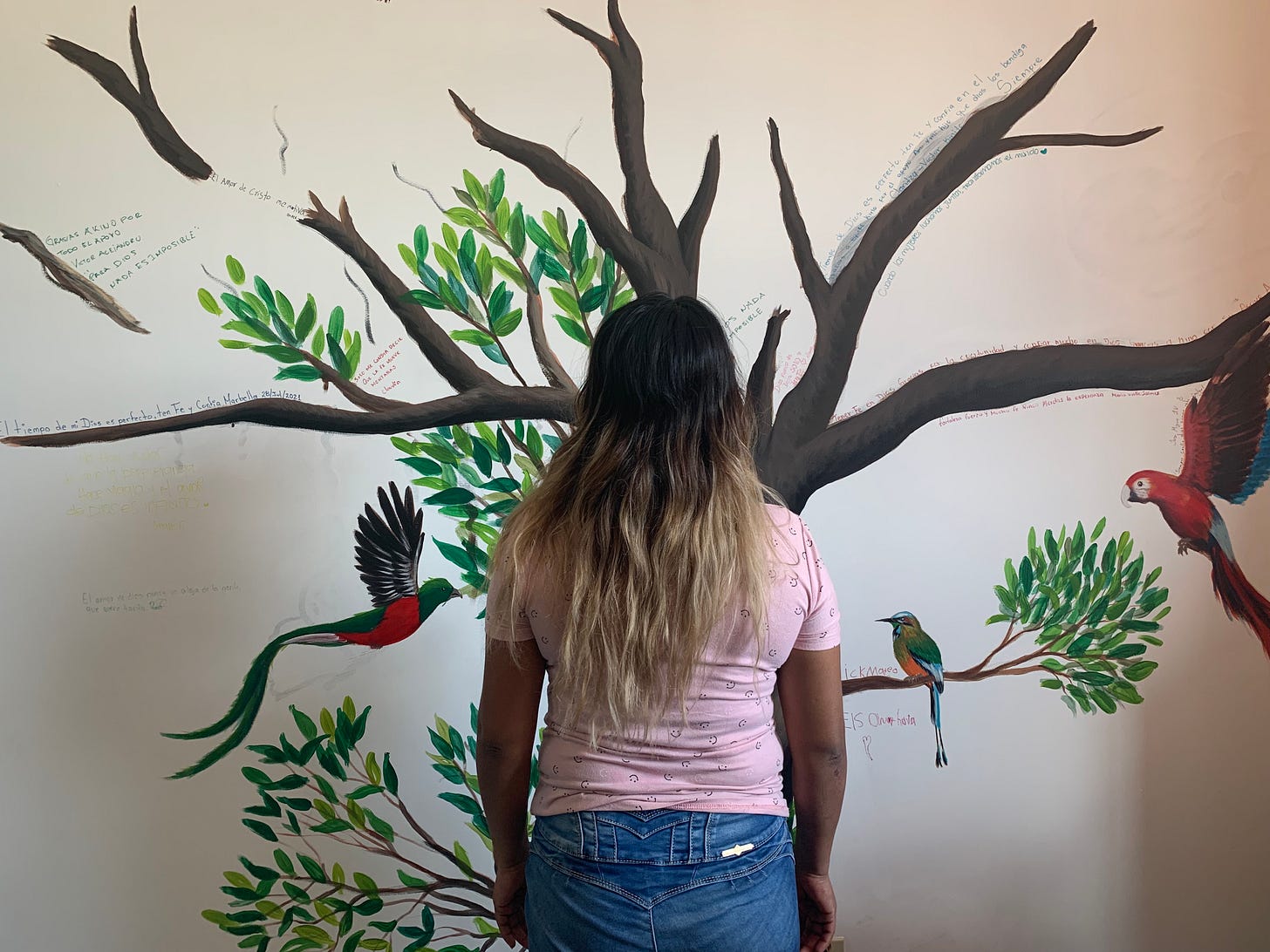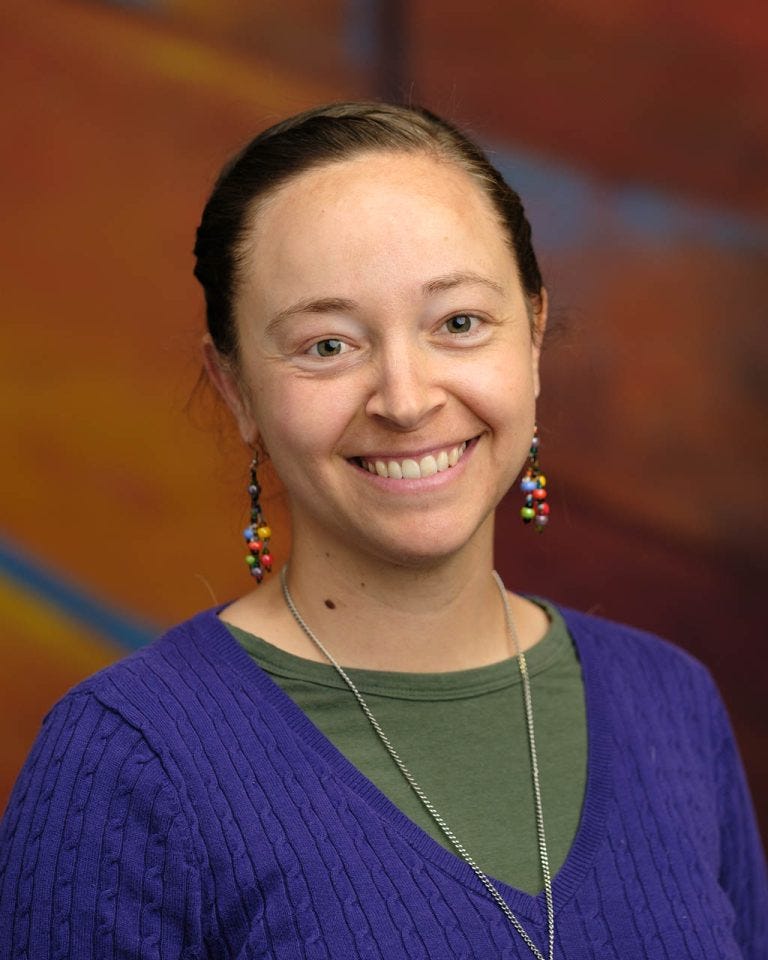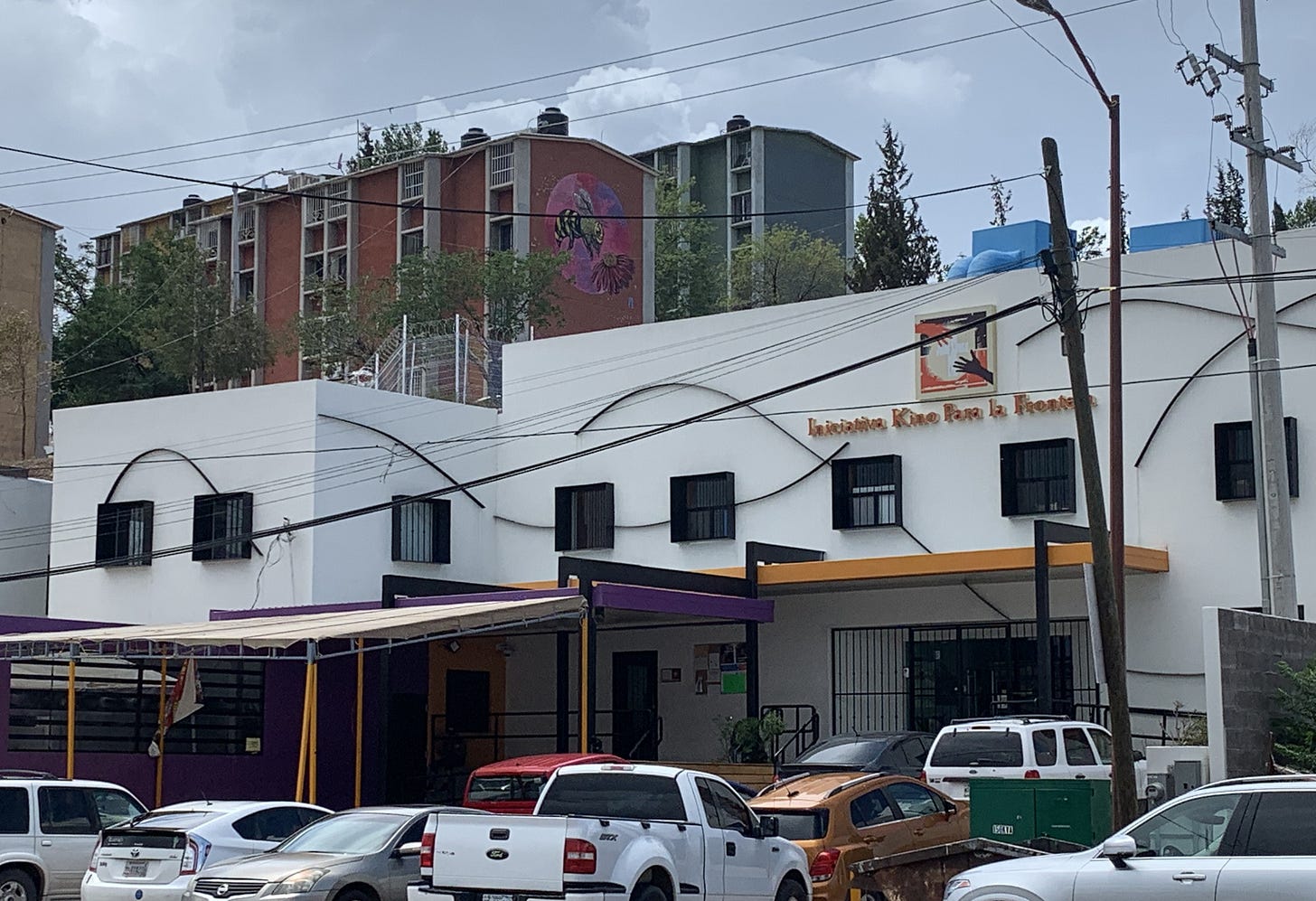"A lot of families are suffering": A Q&A with Sister Tracey Horan from the Kino Border Initiative in Ambos Nogales
In Mexico, Horan has interviewed numerous people deported under the Trump administration."Overcrowding in detention, a lack of oversight and misinformation" are creating dangerous conditions, she says

Sister Tracey Horan is the associate director of education and advocacy for the Kino Border Initiative, a binational, Catholic-run organization in Ambos Nogales. For six years, she has worked at Kino’s migrant shelter in Nogales, Sonora, where she accompanies recently deported Mexicans in the process of reintegrating into Mexican society. Sister Tracey is often one of the first people that recently deported people speak with at the shelter after they arrive in the bustling border city of Nogales. She gathers their information, provides them with details about KBI’s support services as they decide what to do next, and in some cases supports migrants who want to file complaints about ICE or CBP abuses. These days, Sister Tracey says, they serve dozens of people each day at the short-term shelter, and she estimates that 2,000 to 3,000 Mexicans are being deported to Nogales every month. Many Central Americans are also deported via Nogales, Sonora, but they are quickly whisked away by Mexican immigration and flown either to Mexico’s southern border or back to Central America, she says.
With the growing abuses by U.S. immigration, and a lack of reliable data or information from the Trump administration, surveys and reports like those Sister Tracey and KBI conduct in Mexico offer invaluable insight into the impacts of the Trump administration’s mass deportation dragnet and how it’s affecting due process, family separation, and human and civil rights.
When you speak with people at the shelter, what stands out to you as different from the previous administration? How are people being treated during the deportation process?
I’ve been here for six years. This is the first year I’ve heard so many stories of people who were at a court hearing and were detained even though they had ongoing proceedings, and they were still working through their case.
I’ve also heard from a lot of people who were just pumping gas at the corner or on their way to work. That’s not totally new, but the number has definitely gone up, including people who had legal residency. I talked to one gentleman who said the person who detained him took his residency card and documentation and ripped it up in front of his face. And we’re talking about people who have no previous criminal history. Many of whom have lived in the U.S. for decades.
People are also mentioning a lot of overcrowding. The Eloy Detention Center, the biggest in Arizona, reached record numbers this year. I just spoke with a woman who said she was held in a cell overnight with other women, and there were just benches, and no cots or blankets, and it was very cold. She spent 15 hours on the cold floor. Others are telling us they were detained in a lobby or a meeting room, and they had to take turns, some people lying down and others sitting or standing, because there’s no room in the space for everyone to lie down and sleep.
Due to overcrowding, people are being taken from one detention center to another. We’ve heard a number of stories from people who were held in chains for a significant amount of time. We’re talking 15 hours, 20 hours. I think the longest that I’ve heard was 30 hours. During the time that they’re chained, they’re denied food and water. And my suspicion is they just don’t want people using the bathroom and have to deal with those logistics. People talk about dehydration, and if you have a medical condition, imagine going without food or water for such a long time. It’s an alarming practice.
Another thing that’s really concerning is we’re now hearing that after people are sentenced to deportation, they’re being held in detention for several more days without cause. When you combine these factors with overcrowding and people increasingly telling us they were not able to get medical attention or talk to their lawyers or family members, in addition to the fact that the oversight offices of DHS have been gutted since March, it’s creating a ticking time bomb for something really disastrous to happen. I spoke with one woman who experienced two electrical fires in the Eloy Detention Center, and she shared in detail about the lack of response and how scary it was for her to see people that had fainted, people who had inhaled chemicals, and it took them a really long time to revive. And you consider situations like that, in the midst of overcrowding, in the midst of lack of oversight, and just how dangerous that becomes for people who are in these situations.
What do you think is motivating the longer detentions?
My suspicion is that it has to do with money and with numbers. This administration really wants to publish high detention numbers. That’s a clear goal that they have. If they can hold someone for five days longer, that’s an additional person that they can count in the full count of their detention numbers. We also know that for every day someone’s held in a private prison, the government is reimbursing that company another $125 per day per person. So there’s a financial incentive, and a numbers incentive.
Of the people you’re seeing, were most of them detained in Arizona, or were they detained elsewhere, then sent to Arizona?
From a survey we did over the summer of people living in the U.S. who were detained, 63 percent were detained in Arizona, and the rest was a split. A lot of people deported to Nogales were detained in Tacoma, Washington [at the Northwest ICE Processing Center run by GEO Group, a private prison corporation]. There were also a number of people from Nevada, Oregon, Florida, and a few from Texas and California as well.
You mentioned that many people were detained when they showed up for court hearings, but were they also stopped by the police?
Yes, this is another concerning trend that we’ve been observing. Just how many interactions with local and county and state authorities are ending up in people being detained. In the survey this accounts for 46 percent of the people who were living in the U.S. They were detained by a local authority, with the biggest chunk of that being by a sheriff’s deputy. So that’s a really significant number. It’s something that’s concerning for us in Arizona. There are individual deputies and police officers who are making the decision to turn people over to ICE, regardless of what the broader policy might be.
Of the people you’re seeing, how many are longtime U.S. residents? Are you noticing that more of them are being deported now?
About 55 percent of the people that we’ve talked to who have been deported to Nogales were living in the U.S. The other 45 percent would be people who were just crossing when they were detained. And of those living in the U.S., about 60 percent of them lived in the U.S. for longer than five years. That’s including people who were in the U.S. for decades. We’ve talked to a lot of people who were brought to the U.S. by family when they were toddlers or babies. That’s a pretty common story that we’ve been hearing recently.
Is it relatively new to see people being deported who have lived in the U.S. since they were small children?
It’s not totally new, but something we’re seeing a lot more of with this administration. Right now we’re grappling with how to accompany these people who have spent their entire adult lives in the U.S. They grew up there, have jobs and children in the U.S. How do we serve someone who doesn’t speak Spanish and now they’re in Mexico? How do we serve someone who has no idea where their Mexican birth certificate might be, or who doesn’t know how to navigate bureaucratic systems in Mexico because they spent all of their adult life in the United States?
Also, a lot of people being deported are telling us that Border Patrol is confiscating and not returning their belongings. A woman I spoke with this morning said she was deported without her birth certificate, her ID, her credit card, her phone, all of those things were taken from her and not returned. And so she’s not only starting from scratch, but she doesn’t even have a photo of her documentation because her phone was taken away. So that adds another obstacle for people. Luckily, we’re a binational organization, and so we do have a lot of bilingual people on staff. We have a Mexican lawyer who can support people who are trying to get their documentation in Mexico. But we definitely don’t have the capacity for the amount of need that’s presenting itself right now. We’ve been talking with local Mexican authorities and the consulate to try and figure out, is there a way that they could streamline this?
These are the hardest cases for us. I remember a man who was here this summer. He spoke perfect English and had been living in the U.S. since he was five. When you asked him where home was, he would say South Carolina, because that’s where he grew up. That’s where his work and his family were. He couldn’t accept that his life was now in Mexico. He couldn’t imagine starting from scratch after having a whole lifetime in the U.S.
Are you seeing a lot of families choosing to self-deport in order to reunite with a family member who was deported?
We haven’t seen a lot of that. There’s a lot of confusion and misinformation around the benefits that the government is promising people who self-deport. I have yet to talk to anyone who’s received the $1,000 reimbursement they’re supposed to get if they do self-deport. I’ve talked to people who, when they’re in ICE custody, they’re told, you know, if you sign this deportation, you’ll get $1,000 or $10,000, which simply isn’t true.
The conversation around self-deportation isn’t matching up with the reality of what people are living. I’ve spoken with a few different people who self-deported because they didn’t want to live in fear. What’s more common, especially because so many of these families are so well established in the United States, is that they’re trying to make it work living apart. Trying to figure out childcare and trying to figure out how to survive when the main source of income for their family has been deported. A lot of families are suffering with the new reality of being apart. More of what we’ve been seeing is just the pain and the suffering that people are going through because of the separation, not so much that families are uprooting as a whole and willing to just leave the U.S. voluntarily.

The administration gives the impression that nobody is crossing the border anymore, but there must still be people crossing.
There are still people crossing. Many times for people who have been deported, especially if they have strong ties to the U.S., they will try to cross back into the U.S. I would say, rather than self-deportation to reunite with family, we’re seeing more people going through dangerous routes, whether it’s crossing the desert or climbing over the wall, just to try to get back to what’s home for them. One of our partner organizations in Nevada recently shared that there’s a family at their parish, and the mom was detained and deported. Her husband and children were still in the U.S., and she attempted to cross through the desert to reunite with them, and she died in the desert. This reality, unfortunately, has been happening for decades of people taking these risks, for the sake of family reunification. And now we’re seeing that once again, with people who were deported during this administration and are desperate to reunite with family on the other side.



